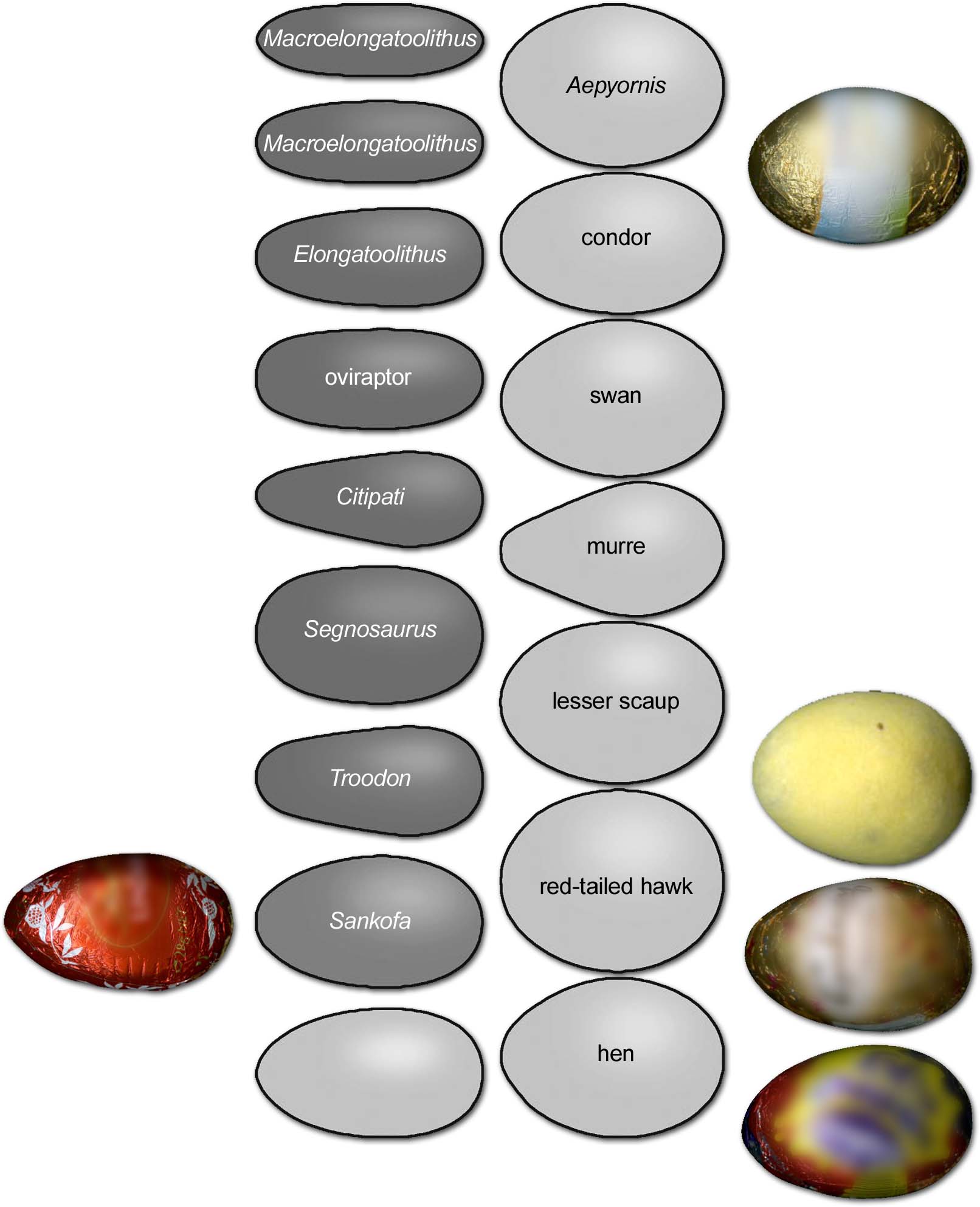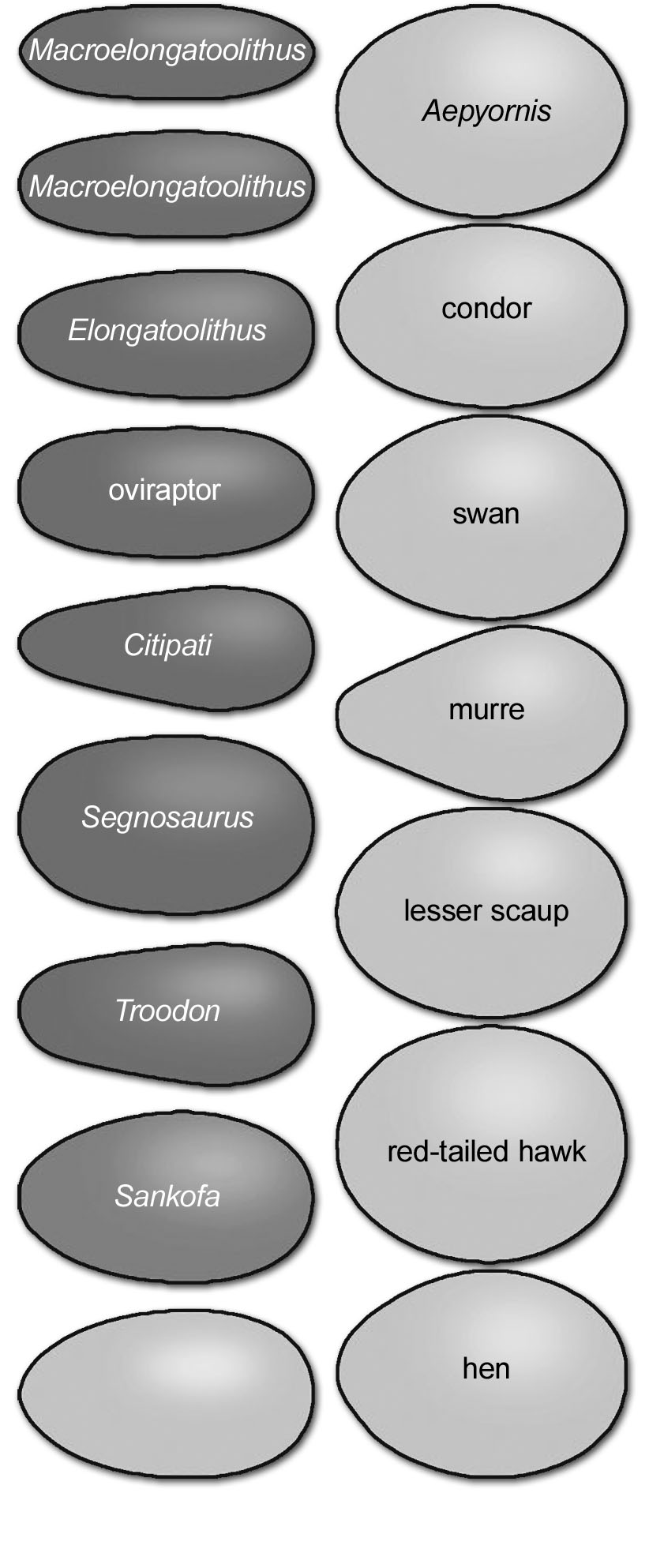Scientists were investigating whether 70 million-year-old fossil eggs found in the Pyrenees were laid by birds, or their dinosaur ancestors - researchers from the University of Leicester extended the study further by comparing Easter egg shapes to those of birds’ and dino eggs.
In their analysis, a mathematical formula was used to determine and describe all possible egg shapes, and real eggs were then plotted into this “egg morphospace"; in simple terms, dinosaur eggs tend to be more elongate and less rounded than birds eggs.
“We found that different species have different shaped eggs, and that the eggs of dinosaurs are not the same shape as the eggs of birds,” said Enric Vicens of the Universitat Autonoma of Barcelona. “Dinosaur eggs also tend to be more symmetrical with less distinction between the blunt and the more pointed end.”
A small additional project carried out at the University of Leicester in the UK reveals that Easter egg shape varies considerably more than would be expected if they all came from the same parent species.

Colored image show the structure of the new dinosaur egg shell, photographed using polarized light. The shell is about a quarter millimeter thick. Credit: Otto Kalin and The Palaeontological Association
Professor Mark Purnell of the University of Leicester Department of Geology said, “Where do Easter eggs come from? At face value this is a simple question, but any parent trying to provide an answer this Easter might struggle to come up with a satisfactory response. According to many, the eggs are delivered by the Easter Bunny, but that doesn't really address the question; where does the Easter Bunny get them from? A quick search of the Internet reveals a confusing range of rumour and speculation – could the Easter Bunny really be a hare? Are Easter eggs from hare’s nests (and are these really plover nests?) Or are the eggs just symbols of pagan gods?
“Many of the smaller eggs to be found commonly on the UK High Street are very similar in shape to hen’s eggs, providing strong clues to their original source. Others are more similar in shape to Condor eggs. Perhaps more surprisingly a few eggs are closer in shape to those of dinosaurs, with one in particular being the same shape as the 70 million year old dinosaur egg, Sankofa pyrenaica, described by the Spanish team.”

Easter egg identifier. The pale grey eggs are from birds, the darker grey eggs are from dinosaurs. Most Easter eggs, as shown on the right, are similar in shape to bird’s eggs, but some are closer to the eggs of dinosaurs. The Easter egg on the left is particularly close to the newly described egg Sankofa. Credit: University of Leicester.
According to Professor Darla Zelenitsky of the University of Calgary, an expert on dinosaurs and their eggs who was not involved in either study, “It is really exciting to find these additional links between extinct dinosaurs and living birds - birds are living dinosaurs so it makes perfect sense that their eggs share such similarities." She goes on to note that “Palaeontologists have long suggested that small early mammals might have raided the nests of dinosaurs. Generally, the idea is that they stole the eggs for food, but if the evidence of this Easter egg research is reliable, perhaps early mammals had more playful and colourful motives.”
The palaeontological research of Lopez-Martinez and Vicens resulted in a handy diagram showing the range of egg shapes in birds and their dinosaur ancestors. So to answer the question of where your Easter eggs come from, simply compare the shape of your eggs to those in the diagram.

Easter egg shape identifier. Credit: University of Leicester.
Citation: Nieves Lopez-Martinez and Enric Vicens, 'A new peculiar dinosaur egg, Sankofa pyrenaica oogen. nov. oosp. nov. from the Upper Cretaceous coastal deposits of the Aren Formation, south-central Pyrenees, Lleida, Catalonia, Spain', Palaeontology





Comments